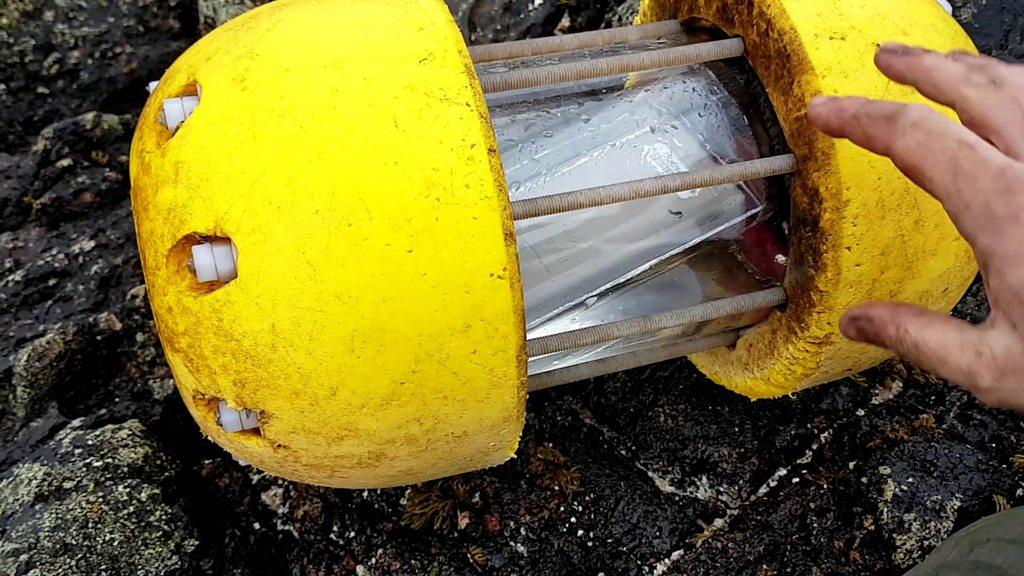Second GPS 'message in bottle' washes up in Faroe Islands
- Published
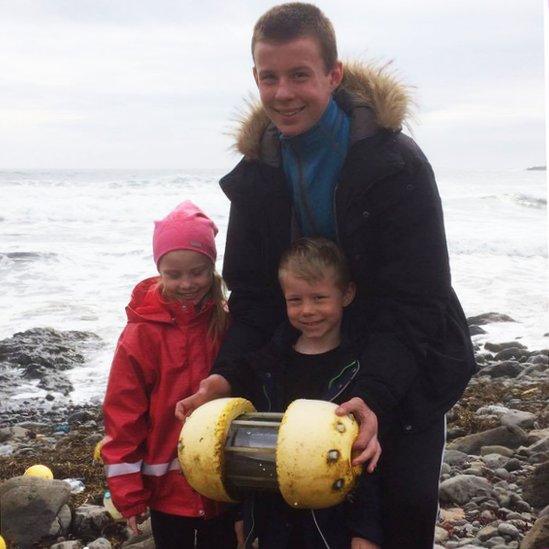
Faroese children Tórur, Tinna and Baldu found the bottle after tracking it online
A "message in a bottle" released by scientists in Iceland has washed up in the Faroe Islands after travelling thousands of miles across the Atlantic.
The GPS tracker-fitted device is one of two dropped from a helicopter in the sea off southern Iceland a year ago.
One was found on Tiree in January and the second was found in the Faroese island of Sandoy.
The devices were released simultaneously as part of an experiment highlighting marine pollution.
Both floated west, passing the coast of Greenland and then towards Canada before drifting east.
For several weeks it had looked as if the second device would end up back on the shores of Iceland.
It then headed in the general direction of Shetland before drifting back to the Faroes.
Rubbish journey
The two devices were part of a science experiment set up to test where marine litter ends up.
Their journeys could be tracked on a website set up by an Icelandic TV science programme which was available to the public.
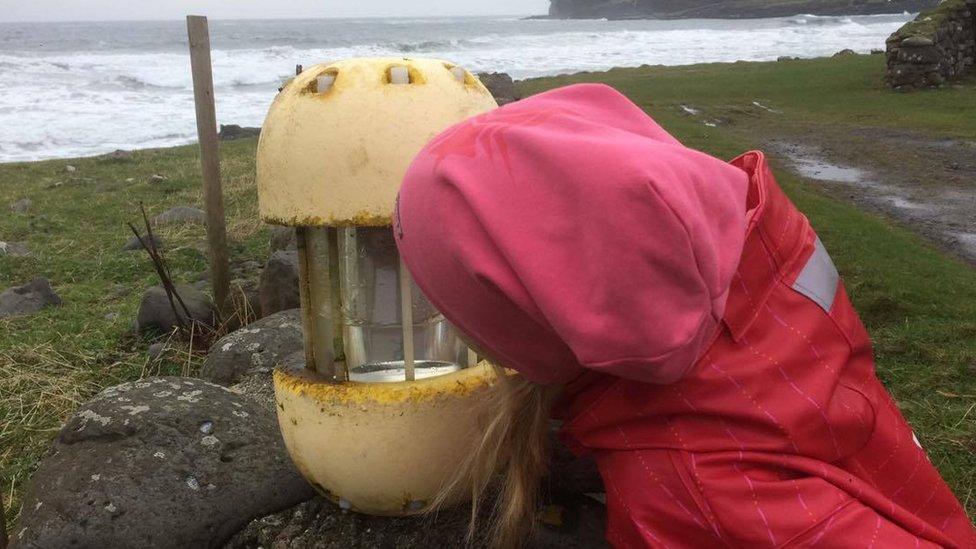
One of the children takes a closer look at the device that washed up in the Faroe Islands
The experiment was designed to highlight how rubbish dropped in the sea does not disappear but becomes a problem for people living on coastlines in other parts of the world.
The message in a bottle came ashore on Saturday and was found by Tórshavn residents Laufey Óskarsdóttir Hansen, her partner and their three children Tórur, Tinna and Baldu.
They had been following the course of the bottle online via its GPS tracker. The family then took the ferry to Sandoy on Sunday morning in the hope of reaching it on the beach of Húsavík.
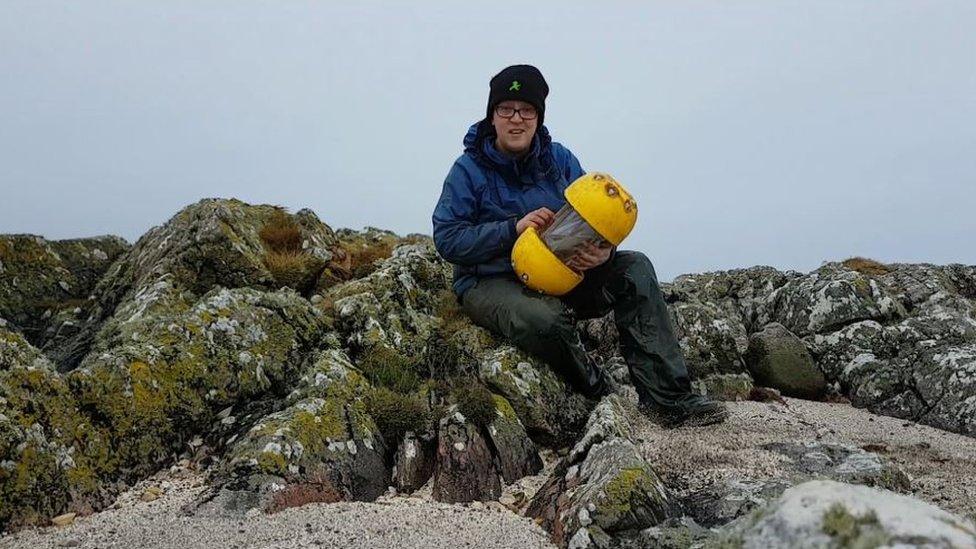
Rhoda Meek found the device on a beach in Tiree
Icelandic scientist Ævar Þór Benediktsson, who has been involved in the research, said winds were a big influence on where they ended up.
He said: "This goes to show again that when we throw something in the sea it doesn't disappear - it goes on a journey. In this particular case, an 18,000km-long journey."
Islander Rhoda Meek recovered the device that washed up on Tiree.
The device had narrowly missed being washed up on the Western Isles, and floated on to the island in the Inner Hebrides.
She carefully packaged it up and posted it back to Iceland.
- Published24 January 2017
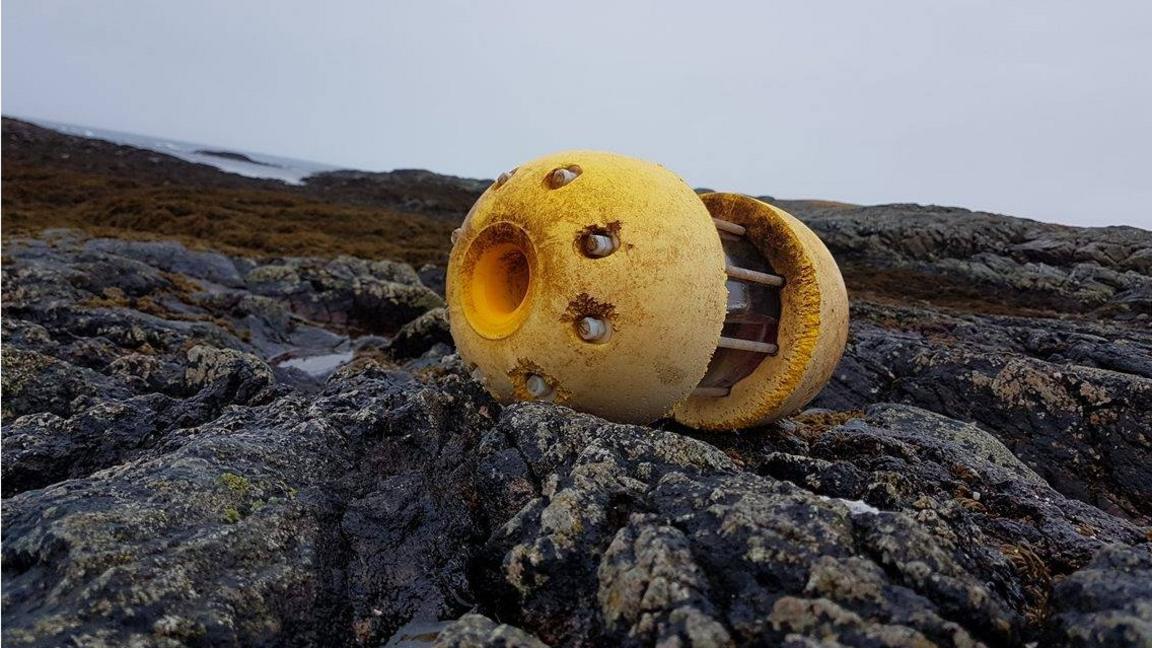
- Published17 January 2017

- Published17 January 2017
